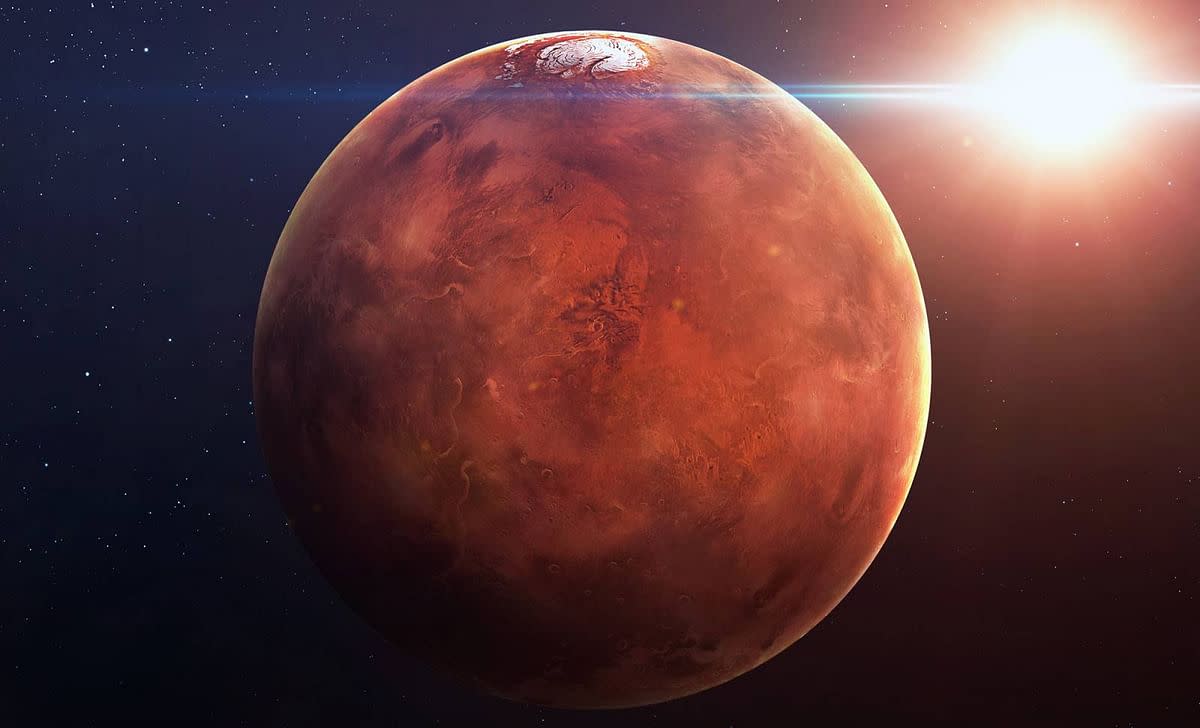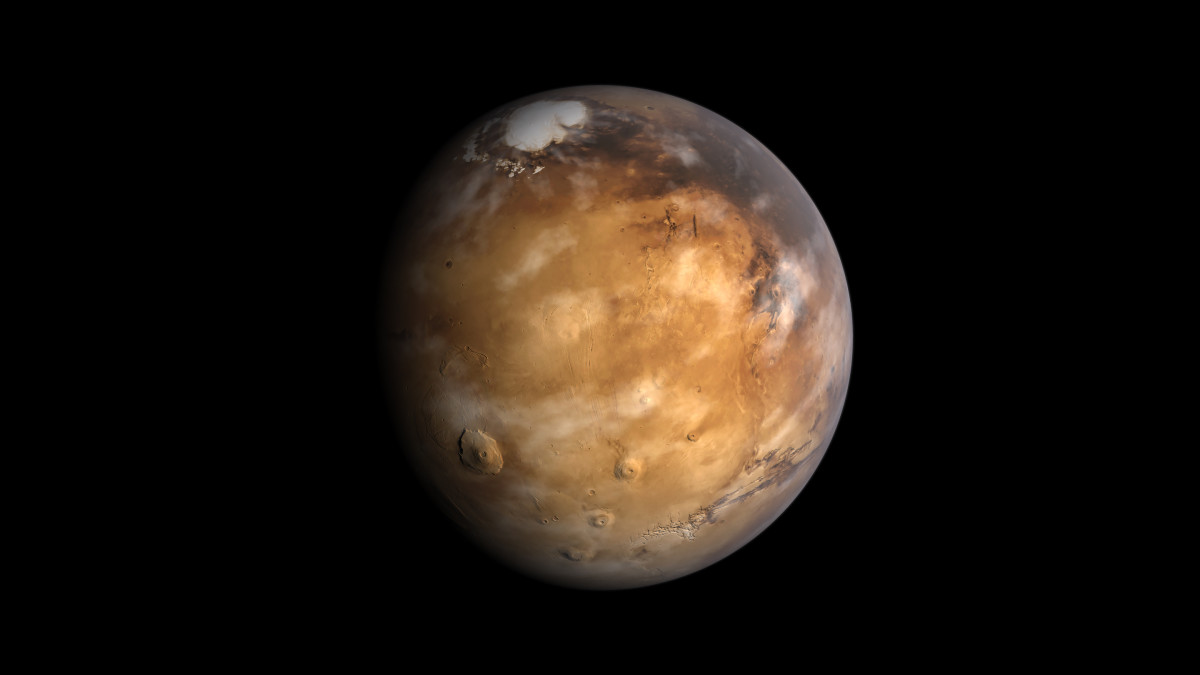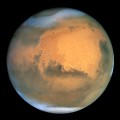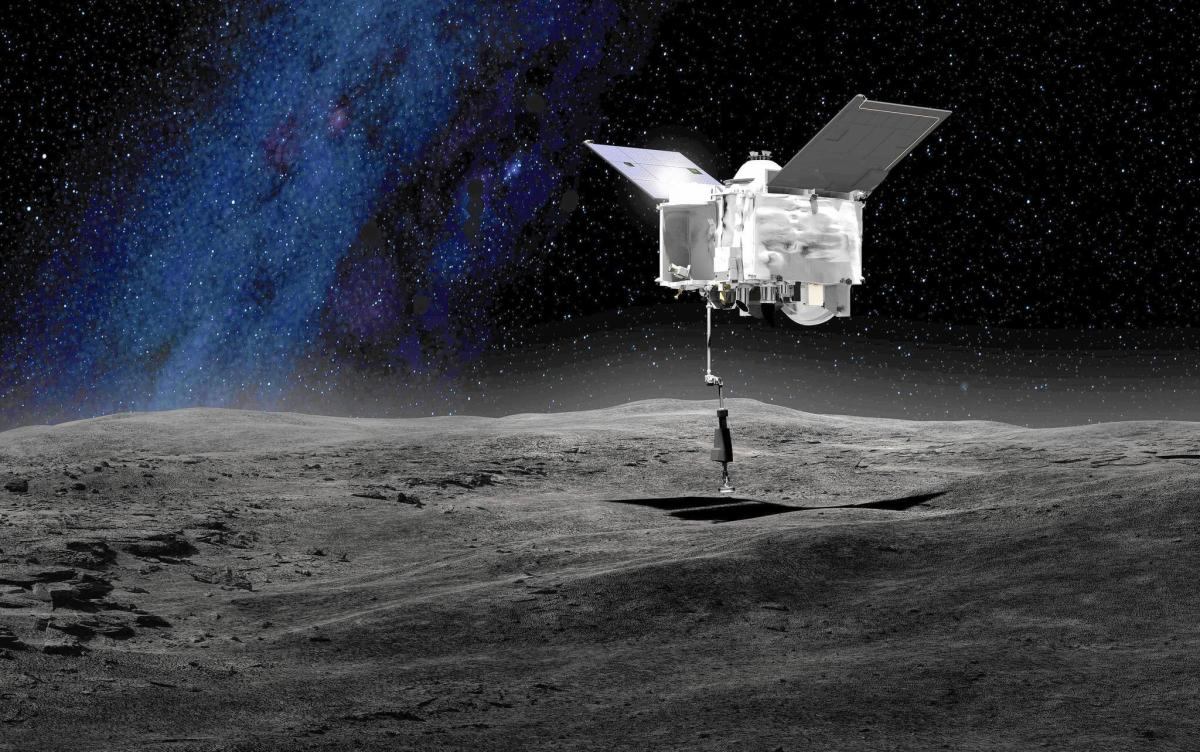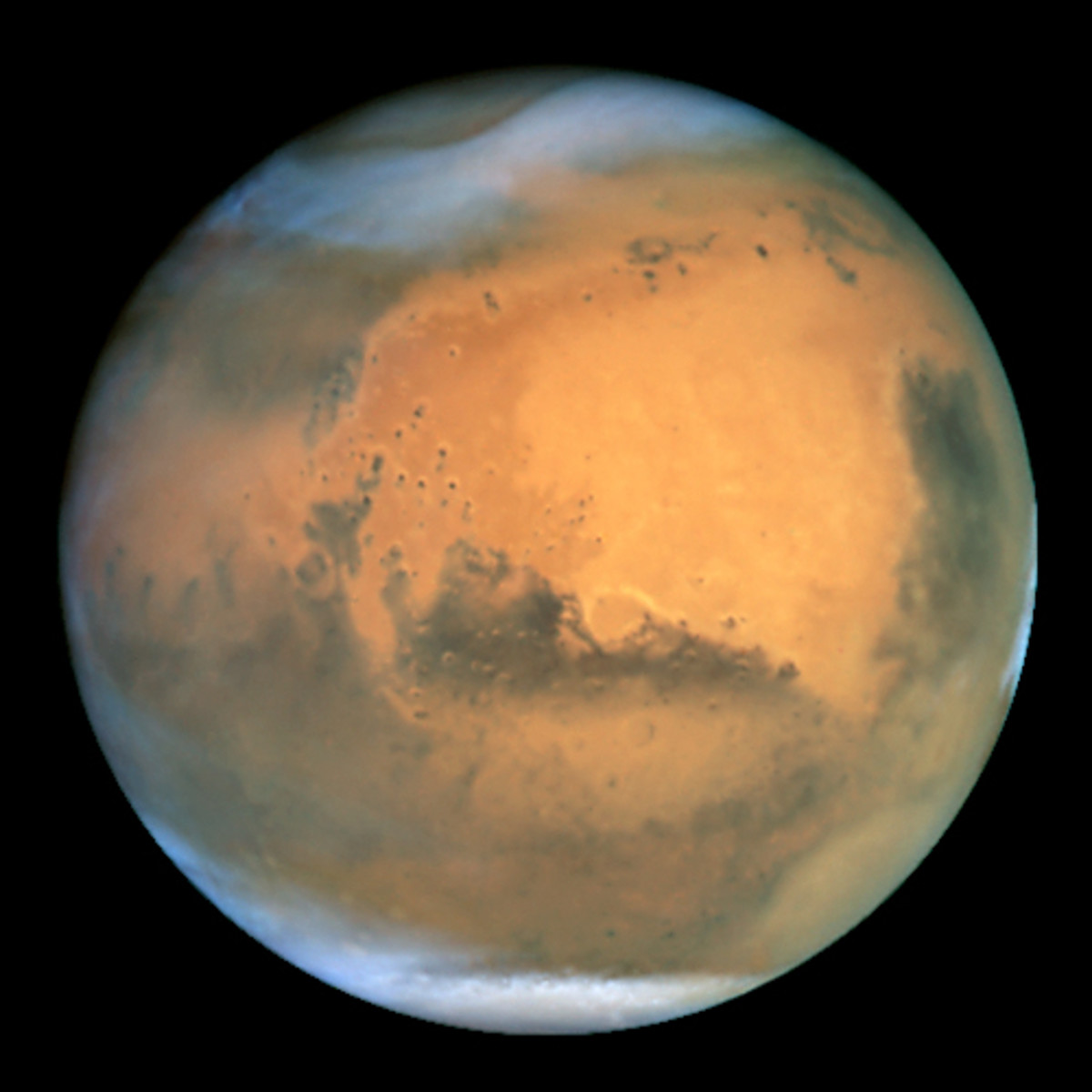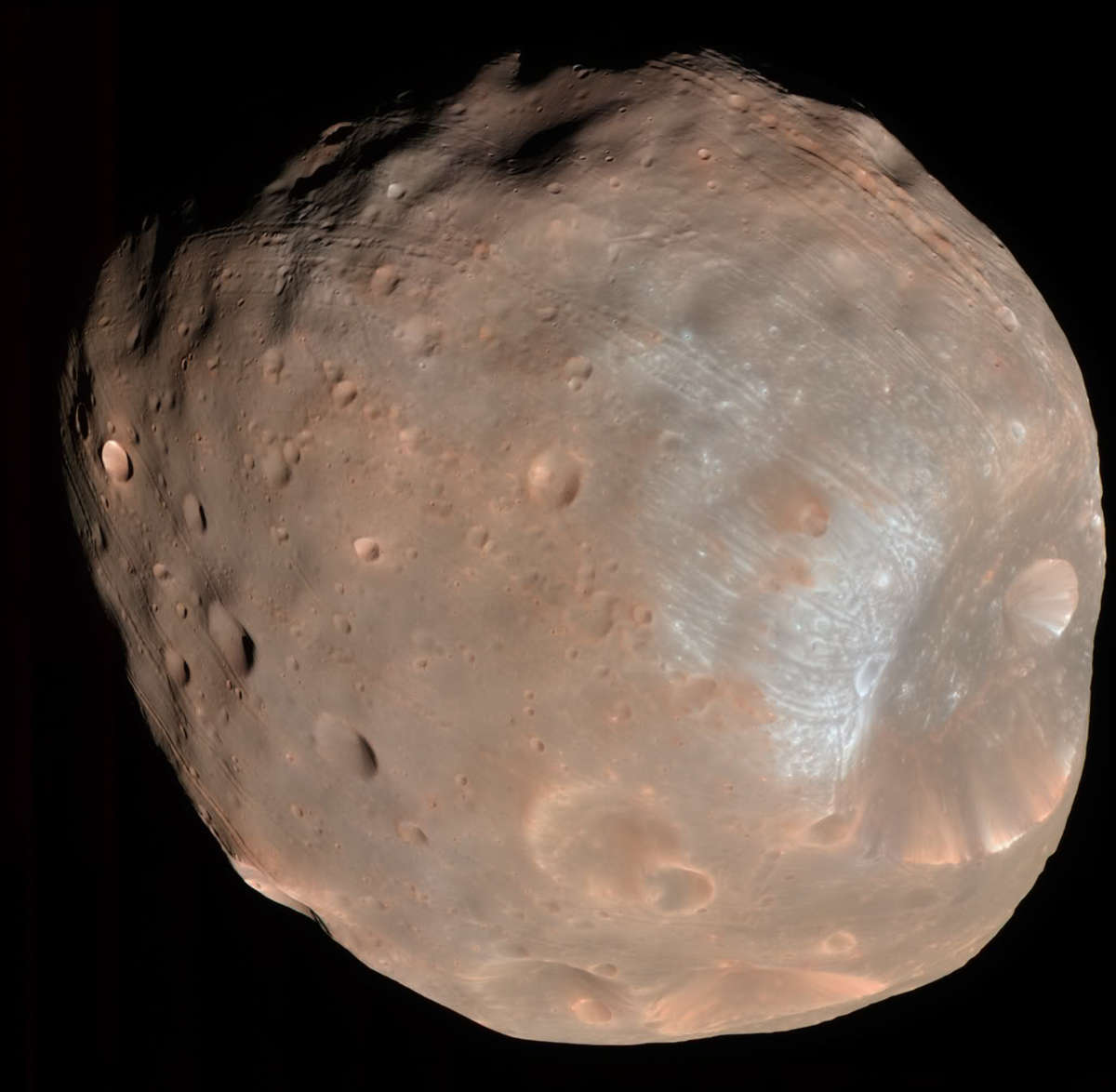First Manned Flight To Mars January 2018 - Married Couple In Space
Mount Sharp On Mars
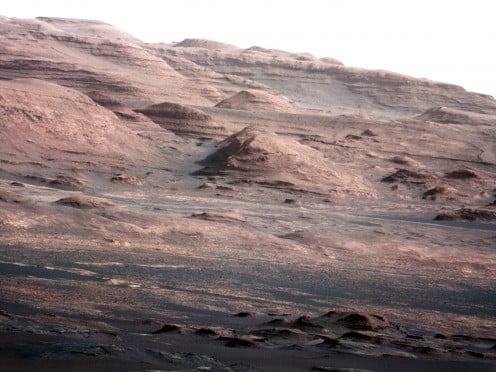
Married Astronauts In 2018?
- Married Couple Eyed for 2018 Trip to Mars
A private foundation is working to send a pair of non-NASA astronauts, possibly a married couple, on a slingshot journey to Mars, with blastoff slated for January 2018.
- Taber MacCallum in an organizer for the Mars 2018 Mission, but also Chief Executive of Paragon Space Development Corp. He and his wife want to make the voyage to Mars, rather than Inspiration Mars's leader Dennis Tito, with a trained astronaut as the second person. Jayne Pointer is MacCallum's wife and partner in Paragon. The couple lived for two years in an extreme isolation environment at Biosphere 2 research lab.
They're Right Behind Us In 2018
- European, Russian space agencies sign deal to cooperate on Mars exploration - The Washington Post
The Washington Post reported on March 14, 2013 that the European Space Agency (ESA) signed an agreement with Russia on or about 3/13/13 to cooperate on two Missions to Mars.
NASA left the ExoMars program with ESA in 2012, because of budget cuts. The ExoMars Rover lands on Mars in 2018. It is scheduled to be unmanned - no people on board.
Contests - How we may finally find out if we can exist on Mars.
By 1st QTR 2013 and two years early, the Google LunarX Prize competition had resulted in ready-to-go lunar landers set for launch to the moon. They were likely to be used for early on-the-ground prospecting for He-3 and other natural resources.
The results of the LunarX contest created a first step toward building a launching platform on the moon for near-Earth asteroid mining, also to be done by Google in a partnership known as Planetary Resources, founded in 2010 with James Cameron and other notables. Deep Space Industries would follow closely behind in this field of industry: asteroid or space mining.
LunarX followed the earlier X-Prize contest that resulted in SpaceShipOne and resulted futher, indirectly, in Virgin Galactic's involvement in spacecraft and aerospace businesses that include space tourism. By the end of 2012, several tickets to outerspace already had been sold at $200,000 each. Additional private companies were formed to take advantage of the new outer space market. Meanwhile, many organizations discussed manned flight to Mars, expecting results by 2035. Again, because of related contests, the results came much earlier.
By January 2018, a scheduled manned flight to Mars would prove whether humankind can reach tat planet and weather it can exist there, with help from SpaceX, the X Hab outer space habitat competition, and other companies on the NASA Commercial Crew roster.
The Mars Generation National Opinion Poll
- Dates Administered: February 4 through February 6, 2013.
- Target Population: Stratified random sample, adults 18+ in all US states.
- Sample Size: n = 1,101.
- Media Used: Email.
- Data: 95% confidence level (CI); margin of error: +/- 3%.
The survey was conducted and the results compiled by Phillips & Company (www.phillipscompany.com) for ExploreMars.org and The Boeing Corporation. This was a serious endeavor that shows the determination of private enterprise, much of it connected to the NASA Commercial Crew, to explore deep space.
Quote from the Preliminary Summary; Full Report Due March 2013:
- On average, Americans believe that NASA spending represents 2.43% of the federal budget with a standard deviation of 1.68%.
- Of respondents polled, 95% believe NASA spending falls within 0.75% and 4.11% of the federal budget.
- In reality, NASA’s budget in FY2011 was $18.4 billion representing 0.5% of the federal budget.
One very interesting finding in this survey is that a larger proportion (80%) of Native Americans surveyed have confidence in humans landing on Mars by 2033 than was reported by any other racial or ethnic group.
Americans seem optimistic about Mars in the survey overall:
- 71% feel we will land on Mars by 2033
- 67% think that both humans and robots should go to Mars.
- 83% think we should expand partnerships with the private sector.
- 75% think that the NASA budget should be increased to 1.0% of the national budget to help with the Mission to Mars.
Mission to Mars 2018, '23, or '33
Do you take one of the Four Positions?
Word On the Street
Public debate has included the likely existence and usefulness of NASA ever since the Cold War. However, since 2009, the opposing voices have been raised in argument, rather than debate --
Position One: NASA is a waste of money that is better spent on helping the poor. (NOTE: The NASA budget is 0.5% of the US National Budget.)
Position Two: Many inventions, including heath related treatments as well as business products, have resulted directly from NASA and the US Space Program.
Position Three: President Barack Obama killed the US Space Program and will close down NASA. He may be directing the public to look to private business and its plans to proceed to Mars in order to deflect attention from the moon and secret activities or facilities that operate there.
Position Four: NASA and the US Space Program are passe and there are no jobs in Aerospace Industries. (This is patently false. The global aerospace economy amounts to $300 billion and is projected to reach $1 trillion by 2020, according to Phillips & Company in Austin Texas.)
A Mars Reality Show - The Dutch Plan Mars Landing for 2023
- Mars One
Mars One will establish the first human settlement on Mars in 2023. Mars One invites you to join us in this next giant leap for mankind! Astronauts will be chosen on a Public Television show. - Future Mars Colony Nabs Its First Investors
Additional Related Contests In Aerospace Industries
- Moon Tourism and Jobs via Google LunarX
Since the 2010s, emerging businesses have promoted a future of space tourism - excitement, discovery, package tours and outer space hotels. Workers will be needed as well. The first step happens in 2015, when 26 Lunar X competition business and scien - Science Magazine’s Science Prize for Teaching Scientific Inquiry
Students use Odyssey for photographing the Martian surface for analysis and report. - US Space History: Exploration Opens to Teachers, Students and the Public
Brent Spiner, Lt. Commander Data from the popular Star Trek saga, and others have joined a leading Space Mining company to guide the American public into participation in space exploration.
Mars Odyssey With 1012 Gigabit of Data Capacity Is Used By Students K-12 and College
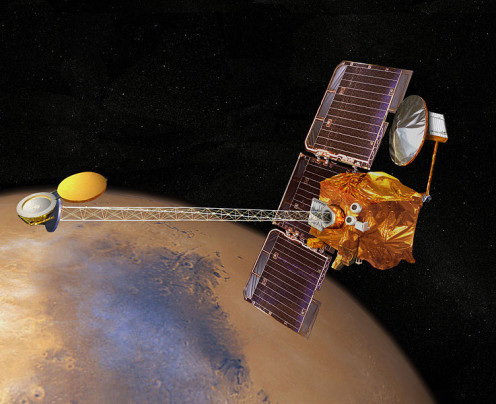
Six NASA Satellites Around Mars, All Active
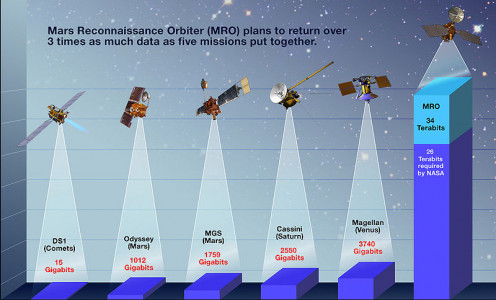
Largest Mars Satellite: MRO with 34 Terabits Data Capacity
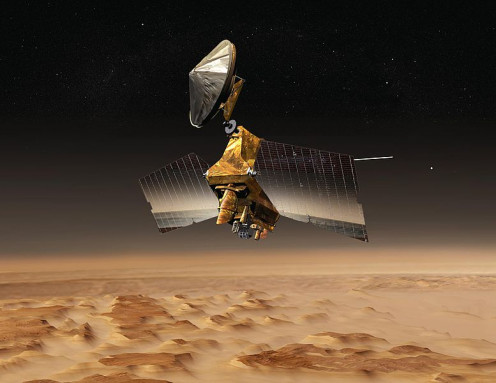
How Big Is a Terabit?
1 terabit (Tb) = 1012bits = 1,000,000,000,000 bits = 1,000 gigabits (Gb).
1 terabit (Tb) equals one trillion bits, in other words.
1 gigabit (Gb) = 125 megabytes (MB) = 0.122 gigabytes (GB).
COMPARISON:
- The MRO Mars satellite has a 34 terabit (Tb) capacity = 4,250 gigabytes (GB).
- My flash drive has 8 GB of data capacity and seems huge.
- Considering the large data capacity of the MRO, the decision by NASA personnel to allow students to use Odyssey was easily made.
Planetary Resources's Arkyd Prospecting Satellite Telescopes
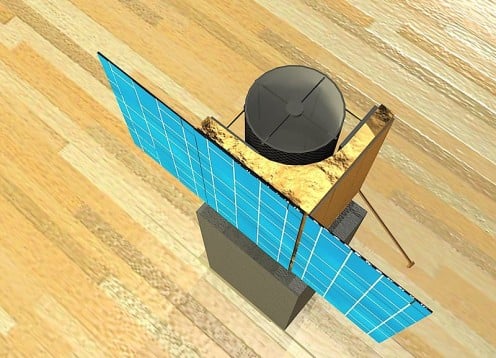
- Google and Prospecting Satellites In Asteroid Mining
This pioneering work will begin with the Arkyd-100, 200, and 300 series of prospecting satellite telescopes.
Surveying and Prospecting On Mars via Satellite
Satellites for observation and surveying have been in orbit around Mars since Deep Space 1 was launched on October 24, 1998. The last of six launched was the MRO (see picture above), launched in 2005. Data gathered by the MRO dwarf the results achieved by the previous five satellites combined.
The list of satellites in Martian orbit include:
- Deep Space 1
- 2001 Mars Odyssey - Still active and used by Students from elementary school through college to snap photos of the Martian surface for study and interpretation by the Mars Student Imaging Project (MSIP) that is sponsored by NASA. Not a contest per se, the project spurs interest in Mars, STEM courses at all grade levels, and aerospace business/careers. Author Sir Arthur C. Clarke, who suffered ridicule for his "nonsensical" comsat idea would be proud of our Martian satellites today.
- Mars Global Surveyor
- Cassini-Huygens
- Magellan probe
- Mars Reconnaissance Orbiter (MRO)
Mars Launch 2018: Mission For America
Millionaire Dennis Tito is head of a nonprofit corporation called the Inspiration Mars Corporation (no website as of this writing), He scheduled a news conference to be held Wednesday, February 27, 2013 to formally announce his plans to begin a manned flight to Mars and back in January 2018. This planned trip will be a fly-around without landing and it is scheduled to require 501 days for completion.
That is 1 year and about 4 1/2 months of flight time and means that he would not return to Earth until sometime in June 2019.
By launch date, we hope that Space Medicine knows more about long-term space habitation and how to combat the ill health effects associated with it. Looking at the ise of a Dragon capsule in the diagram offered below, I can see that Deep Vein Thrombosis of the leg will be an immediate problem, because there is no room to walk or exercise. Embedded Reporter David Bloom suffered this condition, fatally, after riding in the confined conditions of a US military tank for a few weeks during Desert Storm.
A New Yorker, Mr. Tito paid $20 million and received help from Russia to visit the International Space Station in 2001. He felt that NASA would not help him. He would like to land on Mars, if possible, because he is aging (b. August 8, 1940) and does not want to miss the chance. The next launch window would be in 2031, about the time that all the other agencies and companies related to space travel feel that a first flight is possible (circa 2031 - 2035).
The Tito March 2018 Agenda
This all begins to resemble the parts of the Jody Foster film Contact in which a Billionaire, aging and sick, flies to outer space in search of aliens as a final adventure.
Some people say that Dennis Tito's trip to Mars is such a stunt, and it could be a stunt. However, the Wright Brothers at Kitty Hawk in 1903 was also a stunt. The longest and highest jump from the sky, actually from outer space to New Mexico in 2012, was a stunt, but a well planned and useful stunt.
Dennis Tito's initial plans:
- From January 2018 to mid-2019, two people will fly past Mars in a Modified Dragon Capsule from SpaceX, which has already successfully docked a Dragon with the ISS.
- The Dragon will fly on the Falcon Heavy Rocket, also produced by SpaceX. Thus far, NASA's own heavy rocket will be ready only in December 2017, for the moon, but SpaceX can step up its own program -- SpaceX plans to fly astronauts to the ISS in early 2015.
- Additional companies involved are Paragon, which is a Commerical Crew roster member, along with the team that helped a man jump form outer space to Roswell Mexico in 2012.
- Only necessary survival will be considered on the 501 day trip. Two astronauts may be seated for the entire 501 days(see capsule size comparisons below), taking sponge baths and eating specially prepared foods that take up little space. Human waste disposal may be a problem.
Capsule Size Comparison
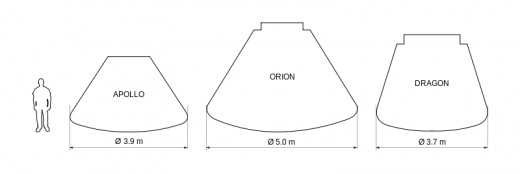
Mars Trip Simulation Study - 6 Men In a Box For 520 Days
- Why the Mars500 mission doesn't prove we're psychologically capable of a trip to Mars
Space travel is a cramped and isolating endeavor, one that can weigh heavily on the mind of a spacefarer. How well we handle conditions like these over long periods of time is something we must consider more seriously in the years ahead, as humanity


